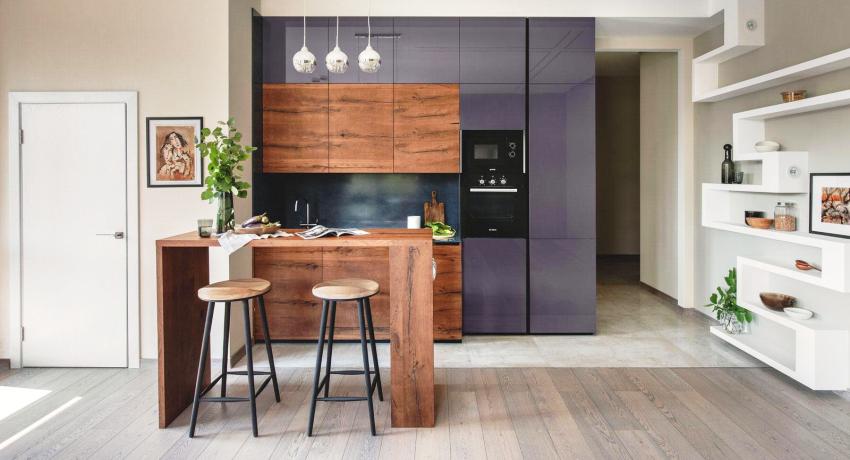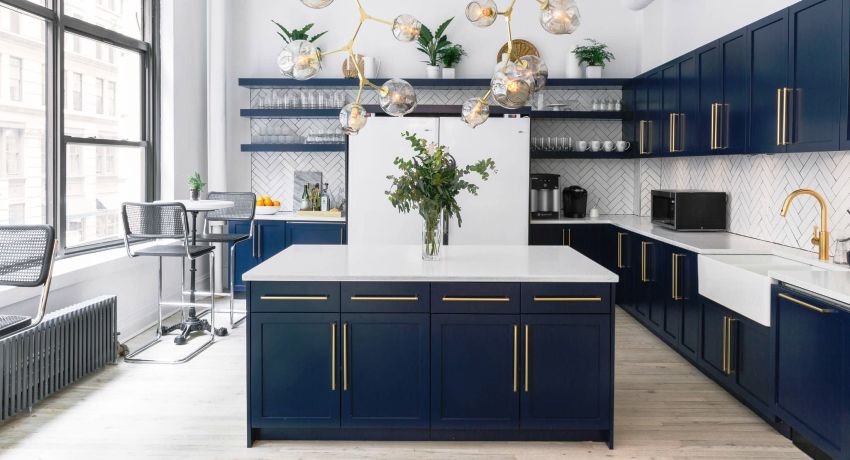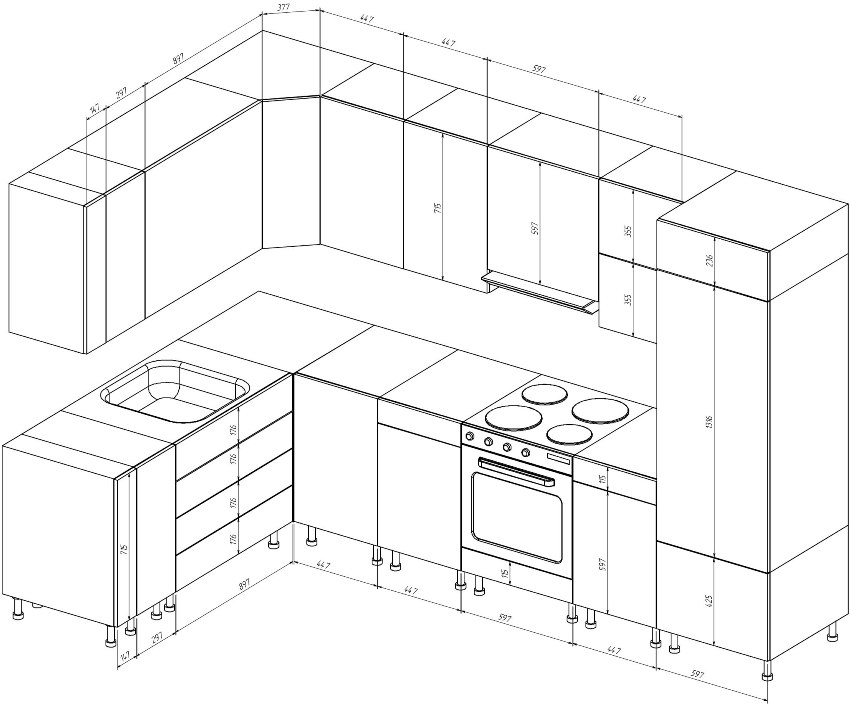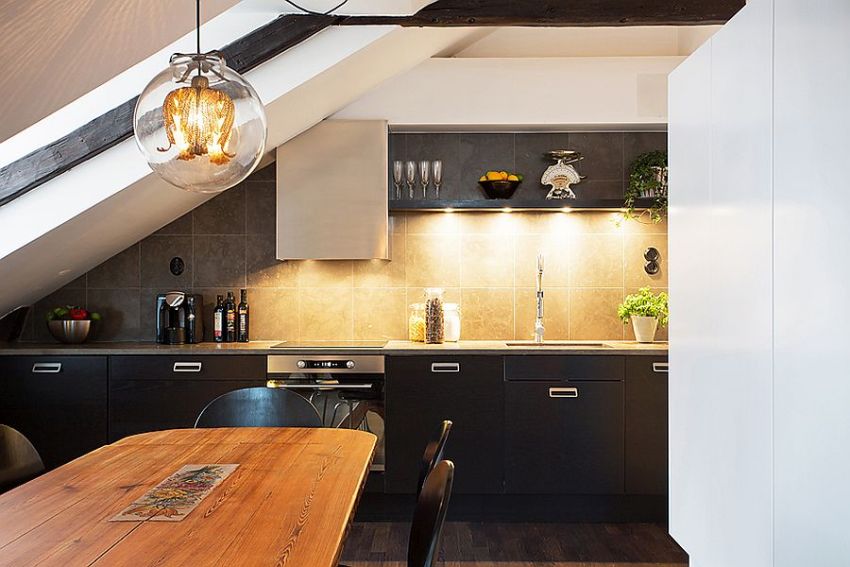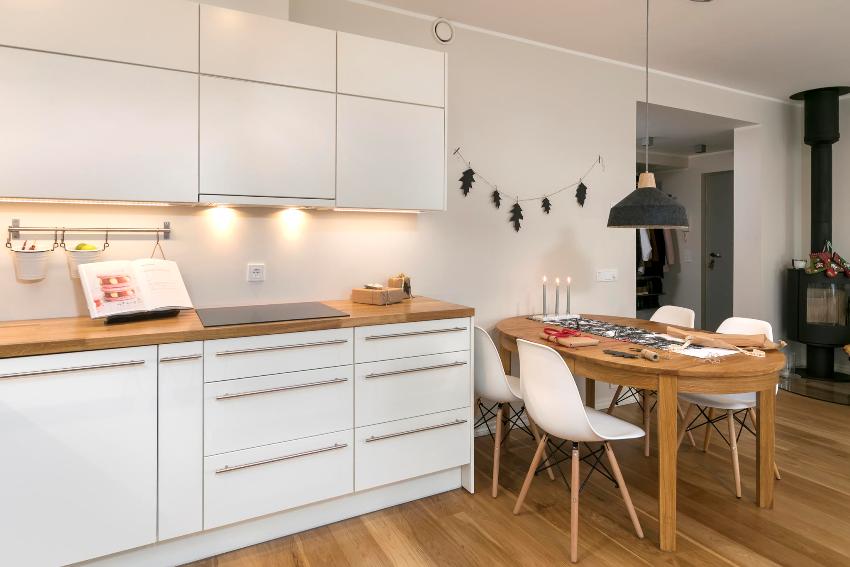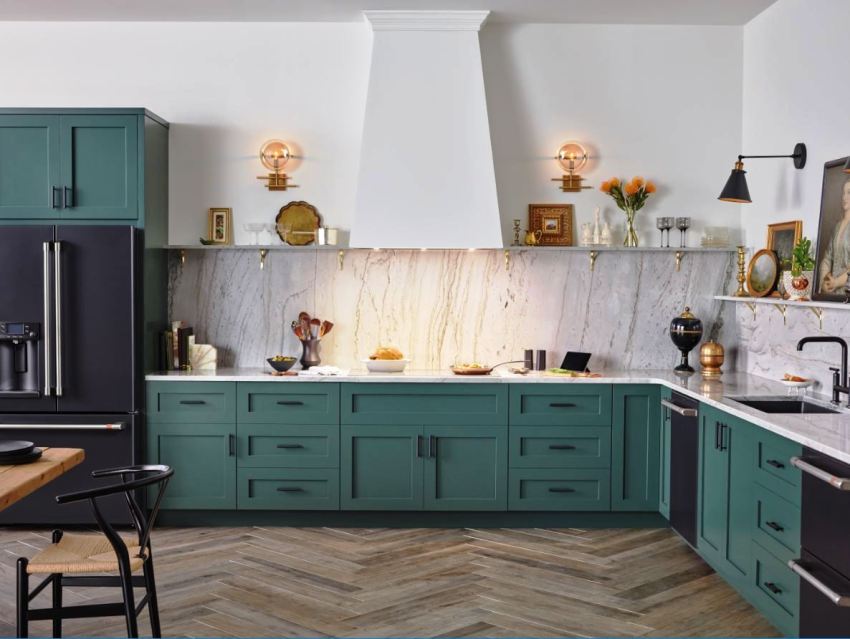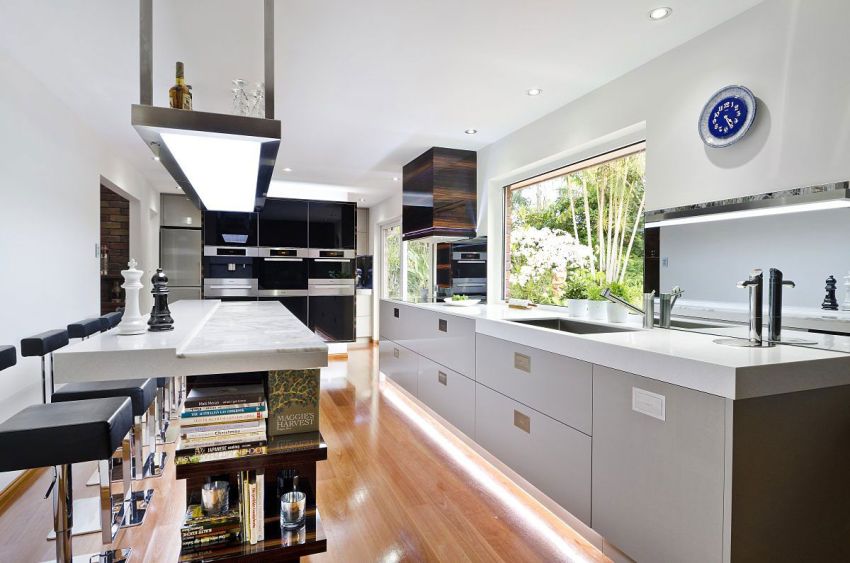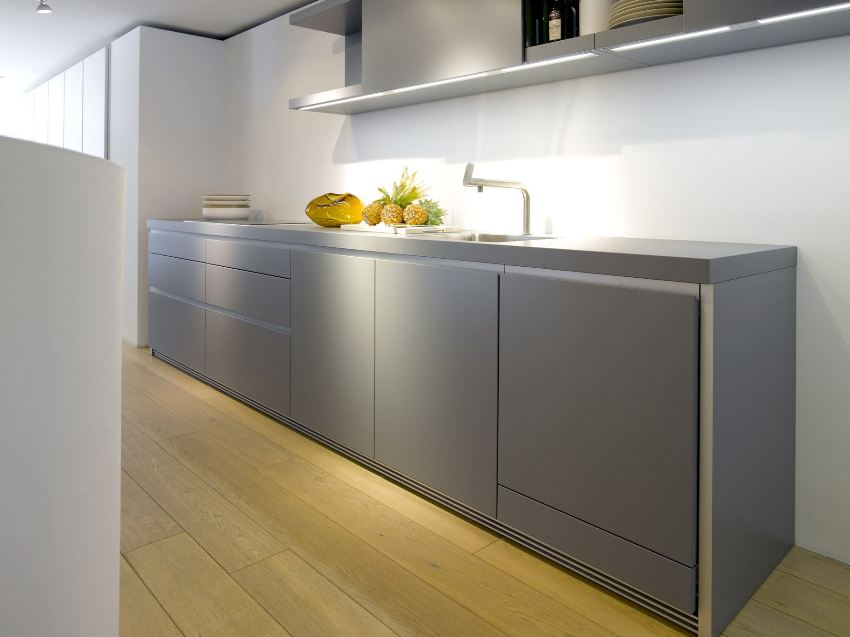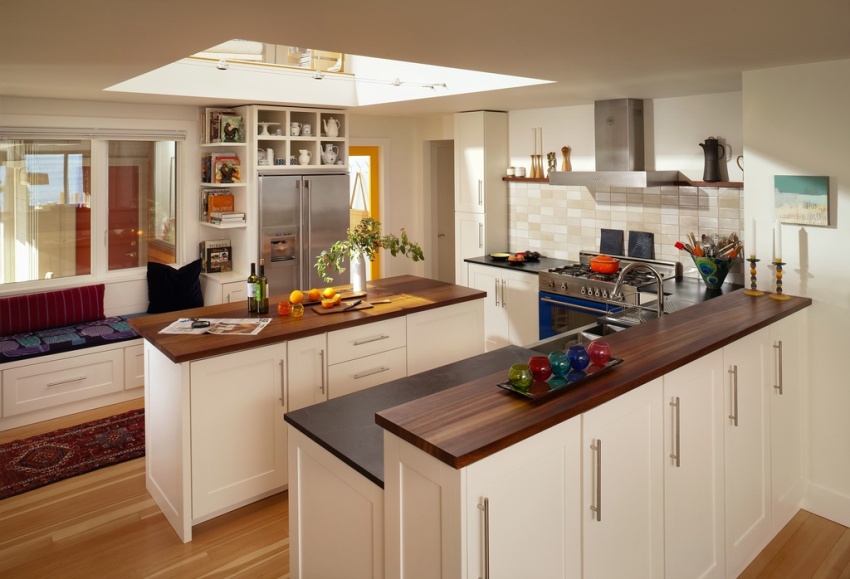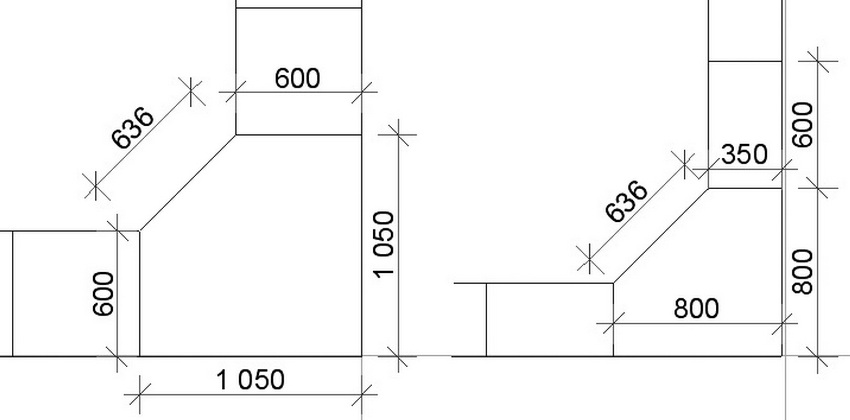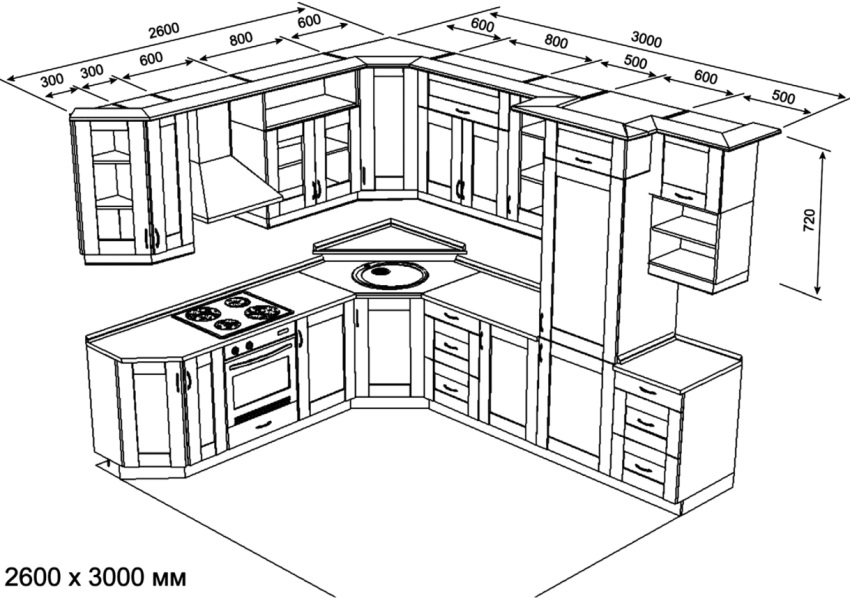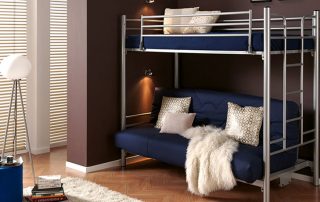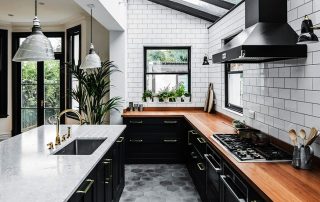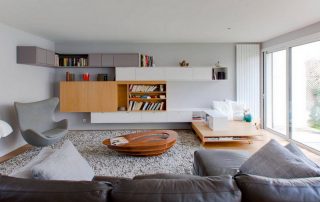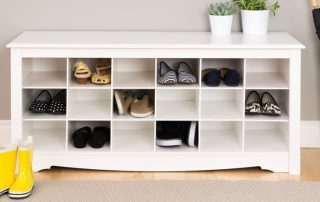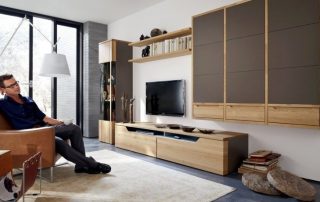The choice of furniture for the kitchen should be given special attention. This place in the house is no less important than the bedroom or living room, since here the family usually gathers as a whole, and the housewives spend a long period of time. Convenient layouts have a positive effect on productivity, well-being and mood, with the size of the kitchen cabinets playing an important role. This article will tell you about their standards, features of measurements and drawing up drawings.
Content [Hide]
- 1 Sizes of kitchen cabinets: the nuances of space design
- 2 Kitchen cabinet size standards and built-in appliances
- 3 Dimensions of kitchen cabinets: features of sketching and drawing
- 4 Arrangement of kitchen cabinets and fronts: standard product sizes
- 5 Floor-standing kitchen cabinet dimensions: standard and custom dimensions
- 6 Standard sizes of wall-mounted kitchen cabinets
- 7 Upper corner kitchen cabinet: types, dimensions, drawings
- 8 Standard sizes for corner kitchen cabinets
- 9 How to make drawings of kitchen cabinets: dimensions, product standards
Sizes of kitchen cabinets: nuances of space design
The organization of the kitchen space is influenced by many factors, taking into account which you can create the ideal kitchen in a specific setting and for a specific family. Observing the rules of ergonomics, you can easily get a cozy and functional interior even in the smallest room. In order to properly organize the space, it is necessary to decide on the issue of purchasing ready-made headsets with standard modules, to independently compose a set of kitchen furniture from two rows of cabinets, or to make a set to order.
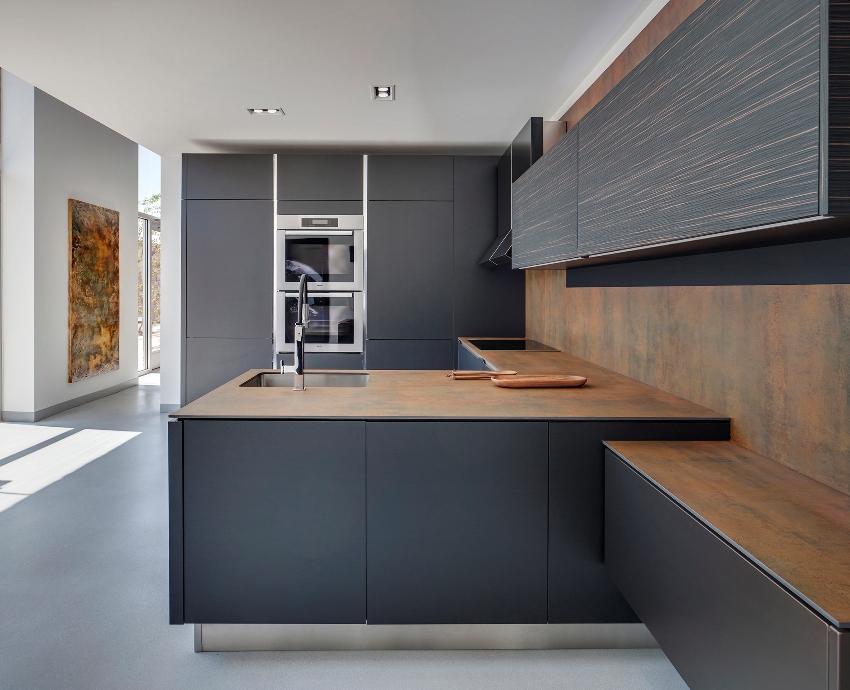
First, you need to make measurements of the room, measure the place where you plan to install the future kitchen set
The standard dimensions of cabinets in serial production are guided by furniture factories in order to save time and money. To create furniture according to individual measurements, the cutting of parts takes place on the basis of specific dimensions, which are made by a specially trained measurer, taking into account the characteristics of the room, layout, stylistic interior design, as well as the taste preferences of the owners, their height.
If, in the case of buying a standard headset, built-in appliances are purchased after the furniture is installed, then in individual projects you can build on the sizes of ovens, refrigerators and washing machines. As a result, the dimensions of the kitchen cabinets should ensure convenient use, and their appearance should ensure the beauty of the interior.
The use of modular systems is the most economical solution for furnishing kitchens. Headsets of this type are assembled from ready-made cabinets with standard parameters.
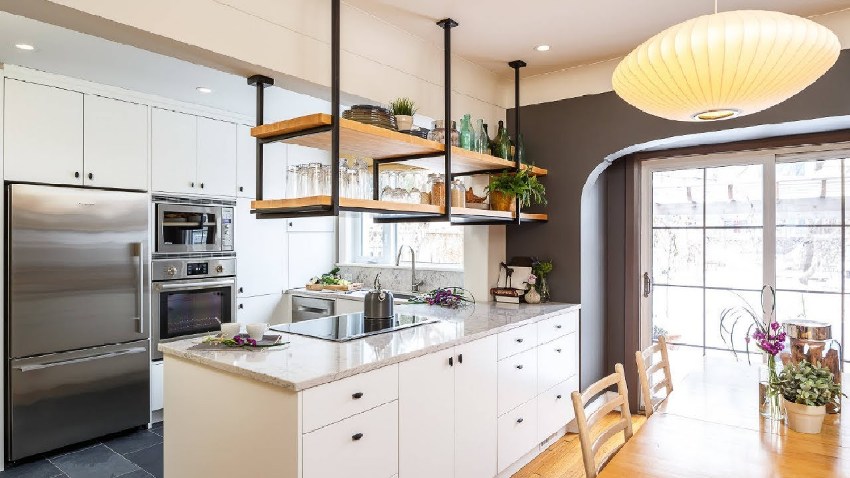
When choosing, one should take into account not only the material and color palette, but also the size of the kitchen cabinets.
Standard sizes of kitchen cabinets and the working triangle rule
For the correct organization of the kitchen space, it is necessary to comply with the conditions of ergonomics, safety and convenience. The so-called working triangle rule, which is that all components of furniture and appliances in the kitchen are placed in certain places, will help to fulfill these requirements. There are three main areas that are taken into account:
- a place where food is prepared, which includes a part of the countertop, a hob, a microwave oven, a multicooker, etc.;
- a place for storing food, including a refrigerator, a freezer, a cupboard with cereals, etc.;
- the cleanliness zone combines a kitchen sink and a dishwasher.
Helpful advice! When ordering modular kitchens, it is necessary to take into account that specific manufacturers set their own step in the manufacture of modules. It can be from 5 to 20 cm.For example, one factory produces modules for kitchens with a width of 45, 60 and 90 cm, while another uses standards for cabinet sizes of 40, 80 and 120 cm in the creation of kitchen sets.This feature must be taken into account when calculating the total length working area and the purchase of household appliances.
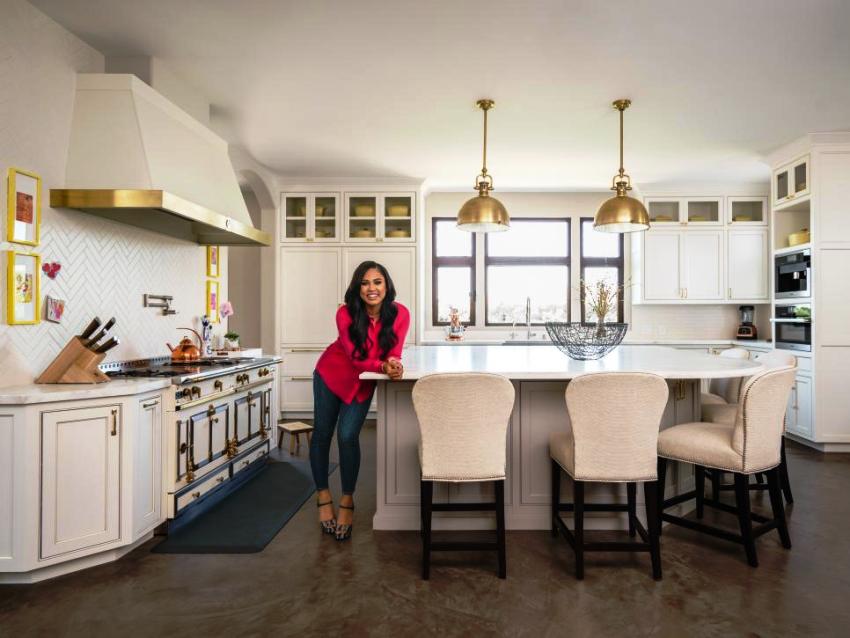
It depends on the size of the headset and the spaciousness of the cabinets how comfortable and cozy the hostess will be using the kitchen
Following the listed rules of ergonomics, all these three zones should be at a certain distance, creating a triangle. The ideal distance between work areas should be 120 cm, which is reflected in the dimensions of kitchen cabinets, drawings and kitchen designs.
It is not allowed to install a sink next to a stove or refrigerator. In this case, the equipment is susceptible to heavy contamination, and for cooking, food must be constantly transported through the sink on the way to the stove. Ideally, there is a space or part of a kitchen countertop between these three places. Here it is worth recalling the Feng Shui rule, according to which the sources of the elements of water and fire cannot be placed nearby.
Standards sizes of kitchen cabinets and built-in appliances
Drawings of kitchen cabinets with dimensions for manufacturing must necessarily take into account the dimensions of household appliances that will be built into the headset. This issue must be decided at the stage of kitchen design. The list of built-in appliances includes:
- hob;
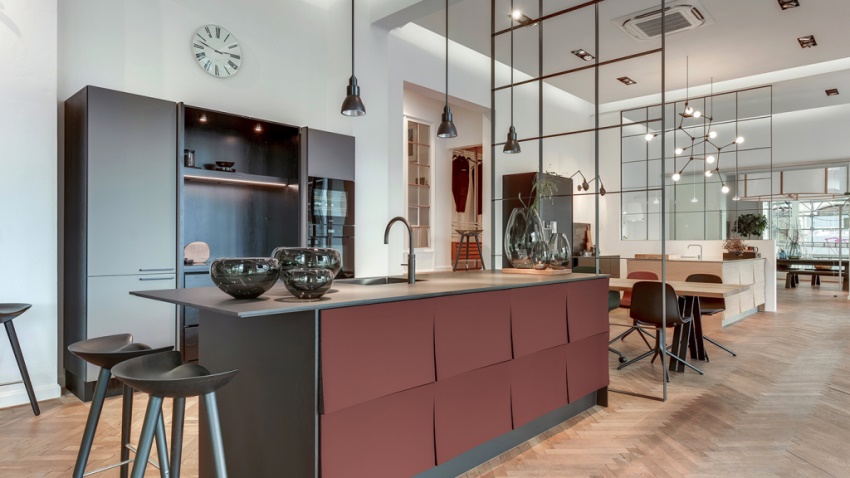
Standard sizes of kitchen cabinets help to design in advance the dimensions and location of the furniture set
- oven;
- dishwasher;
- fridge;
- washing machine.
Instead of a duet in the form of a hob and an oven, a standard stove is often used. A microwave can also be built into the kitchen. All these points should be discussed with the designer, and in the case of independent design, they should be displayed in the drawings. The standard sizes of kitchen cabinets provide for the possibility of embedding individual items of equipment, in particular ovens, dishwashers and washing machines.
The built-in hood deserves special attention, since it involves placement in specially equipped cabinets, which, as a rule, have a lower height of the upper kitchen cabinet. Placement options depend on the type of slab.
In order to ensure free and convenient opening of the oven door, it is recommended to place it at a distance of 1 cm from furniture. The ideal place for installing the oven is not the usual place under the hob, but placement in the cabinet-case - at eye height.This location will provide maximum operating comfort and safety, since children will not be able to reach it.
Dimensions of kitchen cabinets: features of drawing up a sketch and drawing
Before you start drawing up a detailed plan for the location of the headset in the kitchen, you need to create a rough drawing indicating the expected dimensions of the kitchen furniture. The standards set by the developers provide for the possibility of installing a sink and building in household appliances. In addition, you should decide on the placement of such interior details:
- sockets;
- water supply and sewerage communications;
- gas pipes;
- ventilation ducts.
Helpful advice! It is not necessary to install the refrigerator near the stove, as excessive heating will lead to increased electricity consumption by the cooling device and a rapid failure of the equipment. There must be a certain distance (approximately 15 cm) between the refrigerator and the stove to prevent splashes.
It is advisable to create several sketches with different arrangement of furniture in the kitchen. It should be borne in mind that there are different types of kitchen space planning:
- The L-shaped or corner layout is considered the most popular, as it allows you to efficiently, comfortably and compactly use the usable space. The dimensions of the corner kitchen cabinets must match the dimensions of the kitchen.
- Direct placement involves installing the headset along one wall. This option is considered the most economical, as it includes only the most necessary elements. Suitable for small, narrow spaces.
- A U-shaped or circular kitchen provides for the installation of furniture along three adjacent walls. In this case, two corners are filled with cabinets at once.
- The island layout is one of the types listed above, with one work area in the center of the kitchen.
- Peninsular furniture placement is a set with a bar counter at one end of the kitchen.
Arrangement of kitchen cabinets and fronts: standard product sizes
The choice of the size of kitchen cabinets is dictated by different conditions, in particular their location. Given this feature, they are divided into the following types:
- wall or hinged;
- floor or bottom;
- corner.
The main feature of wall-mounted kitchen cabinets is that they are attached to the wall, thus making up the second row of the headset, therefore they are also called hanging, wall-mounted or top modules. The dimensions of the wall-mounted kitchen cabinets are much smaller than the floor-standing ones. In addition, they should be lighter than the lower modules.
Floor cabinets are lower modules in the form of pedestals installed on decorative or technical legs, which can be covered with a special plinth. These cabinets are usually used to store heavy and bulky items, and build in household appliances. The depth of the lower kitchen cabinets is on average 60 cm, and the depth of the wall cabinets is 40 cm. When calculating the dimensions of the lower cabinets, be sure to take into account the parameters of the countertop.
Corner kitchen cabinets are designed to be placed in the corner, therefore they have the most complex structure. They are installed in the first place and it is from them that they are repelled when calculating and drawing up drawings, dimensions. Corner kitchen cabinet types include top, bottom and tall models. Most often, a sink is installed in the corner at the bottom of the headset, and at the top - cupboard with dish drainer.
Dimensions of the base cabinet: standard and non-standard dimensions
The dimensions of the bottom cabinets depend on many factors. For example, the standard headset height is recommended for a person of average height - 170 cm.For tall inhabitants of an apartment or, conversely, for miniature housewives, other requirements should be followed. The main condition is that the kitchen must be comfortable to use.
Helpful advice! To correctly determine the length and height of the headset, it is necessary to measure the width as well as the height of the wall in different places from the border of the floor screed to the middle of the wall and from the middle to the junction with the ceiling. This will help determine the minimum dimensions for the headset.
In order to safely locate gas and electrical appliances when installing and sizing the lower kitchen cabinets, certain standards should be followed:
- the gas hob must be placed at least 50 cm from the refrigerator and 30 cm from the window, sink and wall.
Related article:
Apron for the kitchen: interesting design solutions for original interiors
An overview of the most common materials used to decorate the work area, their advantages and disadvantages. How to choose a quality apron and design for it.
- the distance between electrical outlets and the sink should be 50 cm, which is advisable for the most comfortable use of electrical appliances;
- the cutting area should not be located near windows to avoid dirt and curtains getting into the knives of cutting devices.
Particular attention should be paid to the installation of the hob. It is not recommended to place cabinets with drawers under it, since with their help children can easily get to the stove. For the same reason, the oven should be installed at chest level. It is also not worth placing fancy-type cabinets under it. Next, let's figure out the specific dimensions of the lower kitchen cabinets.
Standard height of floor-standing kitchen cabinets
The standard height of the base cabinets is 85 cm and includes several parameters:
- lower plinth height - up to 10 cm;
- the height of the lower cabinets is affected by the thickness of the countertop, which can have the following parameters: 2.8, 3.8, and 4 cm;
- the size of the kitchen fronts (lower) averages 72 cm.
In addition, the height of the individual components of the lower cabinets is dictated by their appearance. So, the lower modules can include the following elements:
- sink cabinet - usually hollow inside, without shelves, with one or two doors;
- wardrobe with one or two shelves;
- a locker equipped with 3-5 drawers-metaboxes;
- section with a shelf and top drawer;
- section for embedding equipment (hob and oven, washing or dishwasher);
- narrow cargo cabinet (bottle holder).
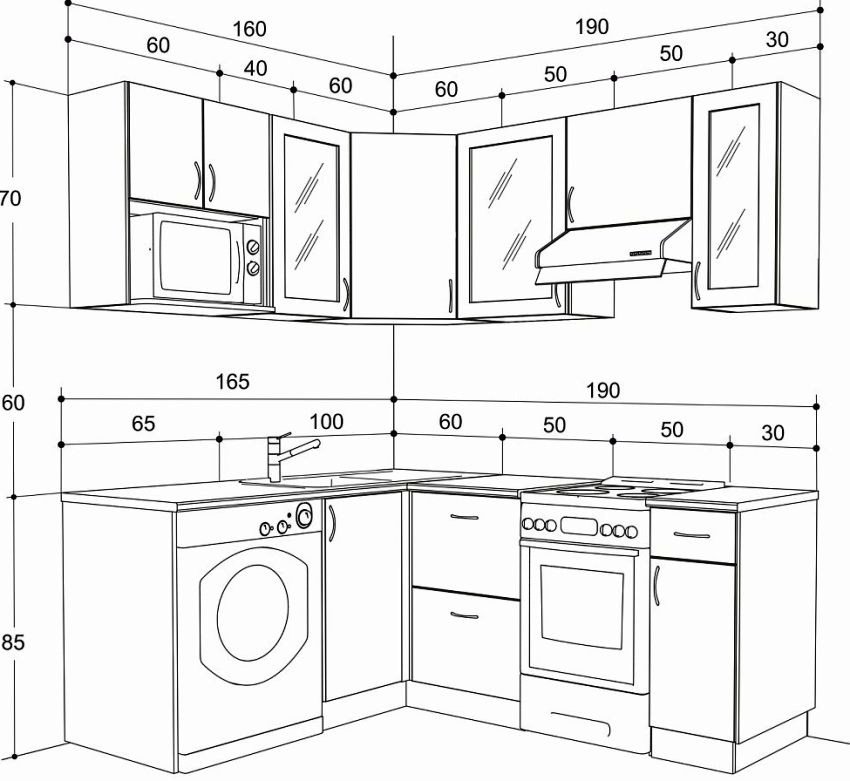
The parameters have a close relationship, so it is important to respect the dimensions, this will help preserve the functionality of the kitchen
The height of the lower kitchen cabinets will help to adjust the legs, which are equipped with a twisting mechanism. This feature is especially important if the kitchen owner is above or below average height. You should not abuse this feature too much, as the kitchen will lose its organic look.
Standard depth of lower kitchen cabinets and their width
The dimensions of the lower kitchen cabinets depend on the dimensions of the worktop. Its standard depth is 60 cm, so the minimum depth parameters for kitchen cabinets are from 46 cm, since the worktop should hang over the cabinets, and there should be a small gap between the back wall and the worktop. In case of installing drawers, it is necessary to take into account that their length should be 1 cm shorter than the depth of the cabinet itself.
Helpful advice! You should not buy cabinets with a countertop less than 60 cm, as there may be problems with built-in appliances. The only exception is the design of a small kitchen.Too wide countertops are appropriate only in spacious rooms, but a kitchen with a depth of more than 90 cm will be simply inconvenient to use, since it is difficult to get deep into the cabinet.
The standard depth of the floor cabinet reaches 56-58 cm plus 2-5 cm of decorative plinth on the countertop. The overhang of the table top in front is a maximum of 3 cm, and a minimum of 5 cm. Its presence protects the body from dirt. There is a countertop clearance at the back of the cabinet, which is necessary for free placement of gas, electrical and water communications. The dimensions of the kitchen cabinet for the sink should provide for two centimeter gaps around the built-in sink.
The width of the fronts of the lower cabinets ranges from 30 to 45 cm. Furniture with wider dimensions will be inconvenient to use, since opening the doors requires additional space. The ideal distance between the lower shelves is 20-40 cm.
The dimensions of the kitchen cabinet for the oven must correspond to the dimensions of the built-in appliances, taking into account the gap behind the appliance for connecting electrical wiring or gas pipes.
Standard sizes of wall-mounted kitchen cabinets
The height of the upper cabinets primarily depends on the height of the ceilings in the room. For example, in "Khrushchev" you can easily reach the ceiling by simply stretching your hand. Therefore, the total height of the headset cannot exceed 215 cm. In "stalinkas", on the contrary, three-meter ceilings require the installation of high top modules, even two-row mezzanines are allowed, which can easily accommodate all kitchen utensils. In apartments of later Soviet buildings and in modern high-rise buildings, the parameters of the headset have increased to 240 cm.
Therefore, it is due to the size of the upper kitchen cabinets that the height of the entire furniture set is adjusted. Thus, this indicator of the upper kitchen cabinets ranges from 65 to 90 cm. Sometimes cabinets can reach a height of 120 cm, but then the doors should be located in two rows.
The standard for the depth of the upper kitchen cabinets is 30 cm, although if the headset uses a wide countertop or it is planned to install built-in appliances, for example, a microwave oven in the top row, then these indicators should be higher. Ideally, the depth of the upper kitchen cabinets is half or 2/3 the depth of the lower modules. The width of the doors of the upper cabinets should be identical to the elements located at the bottom of the headset.
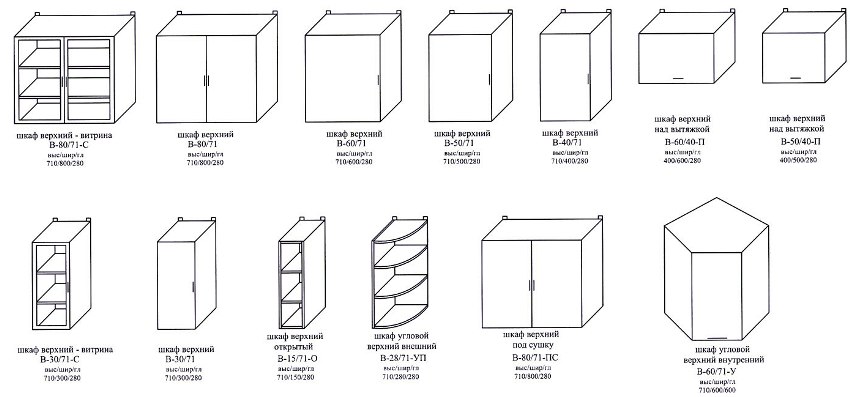
To ensure the functionality and full storage of utensils in the kitchen, you should carefully read the rules for calculating the sizes of the upper modules
The height parameters of the apron zone, that is, the distance from the working surface to the bottom of the upper cabinet, should be at least 45 cm.An increase in this indicator is possible if the hostess is tall and can reach 60 cm.A cabinet with a built-in hood is placed at a higher distance from the bottom row ... For a fume cupboard located above the electric stove, this parameter should correspond to 70-75 cm, and for a gas stove - 75-80 cm. The maximum installation height of the upper modules (from the floor) should not exceed 210 cm.
Upper corner kitchen cabinet: types, dimensions, drawings
Corner cabinets can also be floor-standing and wall-mounted. Moreover, their standards differ significantly from the dimensions of ordinary cabinets, which is dictated by their special shape. In such models, not one, but two walls at once adjoin the wall, which, according to the standard, should have a width of 60 cm. Between them, as a rule, a rear cut with a width of 16 to 18 cm is installed. The parameters of the adjacent side walls correspond to the dimensions of the adjacent modules (in the upper cabinets, this figure reaches at least 30 cm).
Helpful advice! Cabinet doors should be positioned in such a way that when they are opened, they do not intersect with other furnishings, for example, refrigerator doors, drawers and doors of other cabinets.
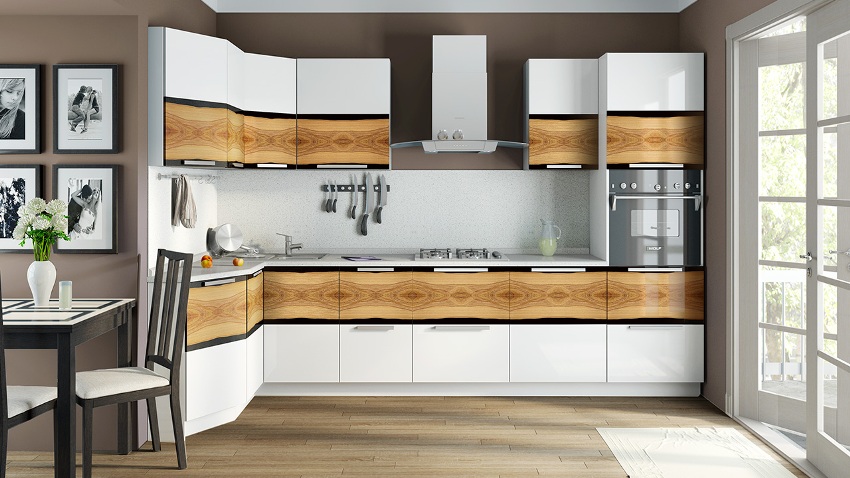
The corner model of the kitchen cabinet is adjacent to the wall not with one, but with two walls at once, which should have a width of 60 cm
The front façade is slightly wider than conventional wardrobes and averages 38 cm. The right-angled triangle rule applies here. The dimensions of the corner kitchen wall cabinet due to the reduction of the ribs near the wall are slightly smaller than the parameters of the lower cabinet. Therefore, the rule of matching the width of the doors is not observed here. To remedy the situation, the upper modules are complemented with a wardrobe with two doors above the bedside table with one door. Corner models are characterized by a large capacity, since the depth of the upper kitchen cabinets can reach 50 cm.
Due to the special spaciousness of the corner cabinets, it is possible to install complex structures and all kinds of devices, for example, carousel and pull-out shelves.
Standard sizes for corner kitchen cabinets
The dimensions of the lower corner cabinets correspond to the parameters of the general kitchen set. This takes into account such parameters as the height and depth of the stove, the dimensions of the sink and other built-in appliances. If we are talking about a small kitchen, then the maximum cabinet depth should not exceed 50 cm.
The height of the corner bottom structure corresponds to the general standard and is equal to 85 cm. The legs of such cabinets can be adjusted, like in ordinary ones. The width of the models can be in the range from 15 to 80 cm. The most common dimensions are a 60x60 cm wardrobe, which is quite roomy and convenient to use. The lower part is installed after attaching the upper one, and they must necessarily match each other.
The most common version of a bottom-corner design is a corner kitchen cabinet for a sink. Its dimensions can be varied and depend on the dimensions of the sink itself. In addition, the type of the sink itself is taken into account - it is a mortise or a consignment note.
Most often, corner models are included in custom-made headsets. In this case, the parameters are calculated independently, the width can exceed 60 cm, the depth of the product can reach 80 cm.Often, two facades or one folding door are used in the corner cabinet on which the sink is installed.
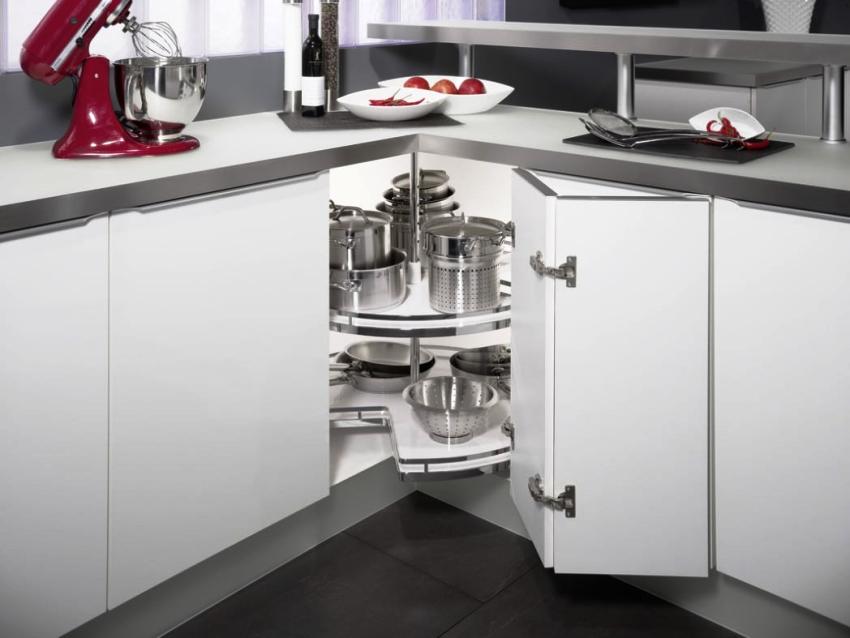
Professionals recommend choosing the size of the corner kitchen according to your desire and convenience
How to make drawings of kitchen cabinets: dimensions, product standards
Before drawing up a drawing, it is necessary to make measurements. Their accuracy will directly affect the quality of the product and the speed of the production process. To do this, you need to take several measurements:
- calculate the perimeter of the room, which is measured at a height of 85–95 cm from the baseboards;
- the overall height of the headset should be measured in several places to help detect possible errors;
- take measurements at the locations of communications, sockets, niches, bulges and windows.
Helpful advice! When drawing up a project, it is necessary to provide for unhindered access to various communications, primarily to valves and gas pipes.
When creating an individual project, it is better to use diagrams and drawings with the most accurate measurements, down to millimeters. Do not forget about the gaps that are located at the back of the lower cabinets, this technique is especially effective in the case of uneven walls in the kitchen. Here it will be quite enough for a margin of 5–7 cm. All errors will be hidden underneath by a tabletop framed by a plinth.
The project should provide for the installation of household appliances, which are located at intervals of 50 cm from each other and from other appliances and elements.The height is calculated taking into account the plinth, which in the standard dimensions of kitchen furniture is 10 cm from the floor to the facade. On a perfectly flat floor, its parameters can be reduced to 7-8 cm, and on an uneven and unstable surface, on the contrary, increased to 16-18 cm. The distance from the upper cabinet to the ceiling should be at least 25 cm.
In this way, kitchen cabinets may have different sizes, but when drawing up drawings, certain standards and rules should be followed. Taking into account various factors, rules and nuances, you can get an ideal project, by implementing which, you will be able to create a convenient, comfortable and multifunctional kitchen.
